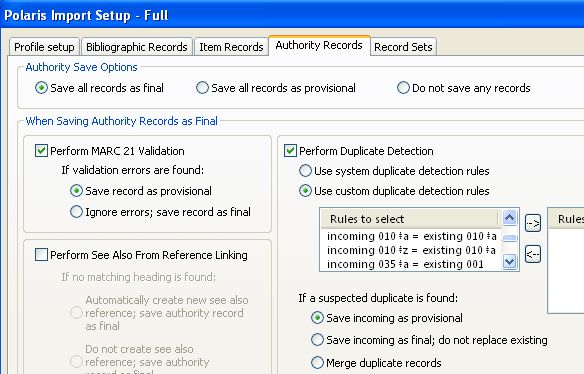Adding a Juvenile Subfield $v to your Library of Congress Heading
Children’s subject headings are a separate file within the LC subject file. They are designated by a second indicator of 1 in the 650 tag. The adult representation found under Library of Congress Subject headings uses a $Juvenile qualifier. The LC Children’s authority file contains just over 950 authority records.
In the automated authority control world many of our libraries are interested in changing all of their children’s subject headings to their Library of Congress equivalent. We have always had the ability to search these children’s headings against their adult equivalent. Recently, our clients requested that we add a juvenile subfield $v at the end of a heading that we flipped from Juvenile to Adult. That was easy enough to do we simply added a $vJuvenile at the end of the tag once the heading was flipped to an adult heading. However, this still did not adequately define the type of juvenile subdivision we wanted to represent the heading.
We knew that there were fixed fields within the bibliographic record that more precisely defined the type of Juvenile book we were looking at. What we decided to do is base the juvenile designation on these specific codes. If the bibliographic record is a book format (leader/06 = ‘a’or ‘t’) then we check byte 33 of the fixed field to determine what type of juvenile heading this is. There are fourteen different characters that define the Juvenile book from Comic Strips to Speeches. However, there is not a valid subfield $vJuvenile …. for each representation. What we decided to do was translate the ones that did have a valid representation to that heading. For instance if byte 33 was a ‘d’ we created the juvenile heading $vJuvenile drama. The following charts indicate what heading are assigned to what code in byte 33.
| = “1” : add “$vJuvenile fiction” |
| = “d” : add “$vJuvenile drama” |
| = “h” : add “$vJuvenile humor” |
| = “p” : add “$vJuvenile poetry” |
All headings that did not have a valid subfield $vJuvenile representation in byte 33 were defaulted to Juvenile literature.
We also looked at leader byte six to determine if the bibliographic record was something other then a book and assign an appropriate juvenile designator to the headings. For example, if leader byte 6 is ‘e’ or ‘f’ for maps we add $vMaps for children or if byte 6 is a ‘g’ and byte 7 ‘m’ or ‘v’ we add $vJuvenile films to the adult heading. The following example illustrates what this change will look like once your juvenile headings have been converted to Library of Congress.
Examples
Child heading:
650 1 $aRain forests.
650 1 $aCollies$vFiction.
Matched LC adult with "Juvenile" description added:
650 0 $aRain forests$vJuvenile literature.
650 0 $aCollies$vJuvenile fiction.
For a more detailed account of subfield $vJuvenile assignments please review section 3.8 of our planning guide: http://ac.bslw.com/community/wiki/index.php5/Profile_Guide_Step_3.8
